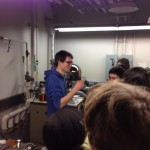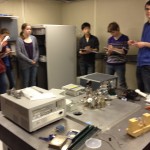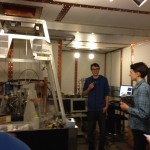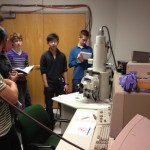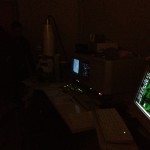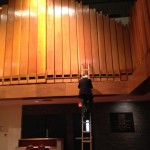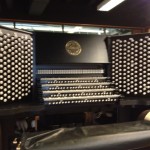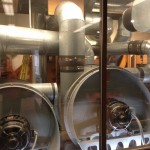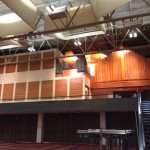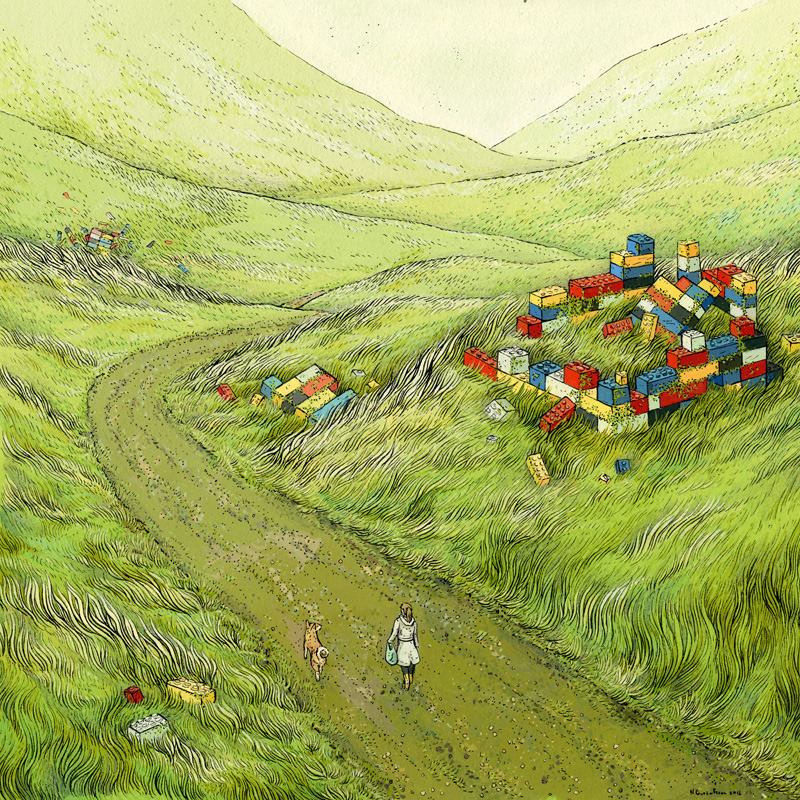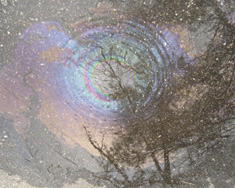Last week to round up our study of thermodynamics we had the opportunity to visit the BU Physics Department. We walked down in the cold (brrrrr) weather to see something even colder. While there, Carsten gave us a tour of Professor Mohanty’s lab who does work in nanotechnology where they have an experiment where they examine vibrations at the milliKelvin scale.
You can read about this experiment at http://nano.bu.edu/
Fabrication, characterization and measurement of molecular-level nanostructures require facilities up to date with the current rate of progress of technology. They use a state-of-the-art ultra-sensitive laboratory with stealth capabilities, which allows a vibration-free, noise-free environment for measurements down to a low temperature of 0.006 Kelvin at GHz-range frequencies and picosecond timescales.
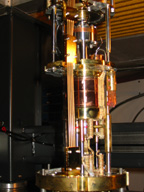
Dilution Fridge Used to Cool Liquid Helium to milliKelvin temperatures!
The facility was in a vibration damped giant Faraday cage!
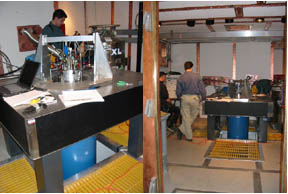
The lab is inside a giant Faraday Cage with copper walls!
We also saw a scanning electron microscope which is used to fabricate nanostructures! In order to view objects with the electron microscope, they have to be conductive. So you can coat them with gold. This is a great example of phase changes. First they melt the gold in a boat, then they vaporize it. The gaseous gold then undergoes deposition (opposite of sublimation) onto the sample.
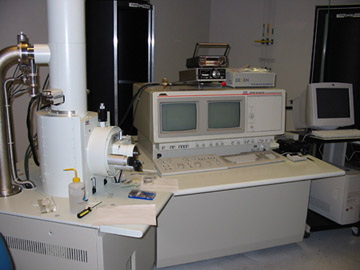
Scanning Electron Microscope
